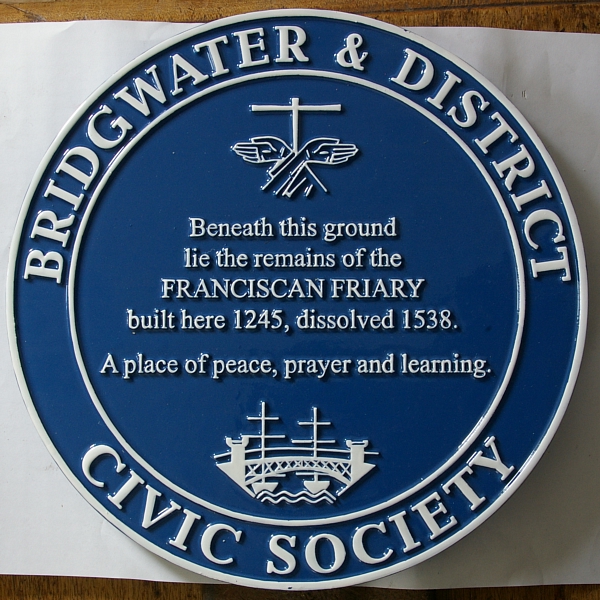
In a small plot of land in Friarn Lawn, a pillar of Ham Stone was erected in 2012. This was made from Ham Stone, a material used in the Friary’s construction for the decorative carved elements, and in a form that copied architectural fragments found nearby. Those pillar fragment would have formed columns inside one of the Friary buildings. The surround land was then developed by Hannah West and a team of volunteers into a community garden.

The Grey Friars (Franciscans) arrived in Bridgwater by 1230. By 1245, Henry III directed that a location be secured for their church and convent, which was finalised in 1246. Construction continued over the years, with the dormitory still being built in 1278. Friarn Street, first recorded in 1298, likely provided access to the friary grounds through the gate, known as “porta fratrum minorum.”
Initially, it’s likely that monetary donations were restricted, but over time this rule appears to have softened. For example, in 1413, Sir Leonard Hakeluyt bequeathed £20 for the church’s upkeep, in exchange for the friars praying for his soul. Burial within the friary grounds was believed to offer spiritual security, and in 1435, William, Lord of Botreaux, moved the remains of some relatives to the friary church.
John Somer, a friar and notable astronomer associated with the Bridgwater Grey Friars and later Oxford University, was mentioned by Chaucer. His work included a calendar covering 1387–1462 and a brief chronicle of the Bridgwater convent.
The original friary church was expanded and rededicated in 1445. This church, measuring 210 feet by 52 feet, was substantial in size. However, the friary was dissolved peacefully in 1538 under Henry VIII. The inventory from the dissolution notes that in 1539, the king profited from the sale of lead, elm, and the buildings.
Under Elizabeth I, the Hodson family claimed certain buildings of the former friary, which by 1642 still included the friary church, used for trials during the Civil Wars. The remaining structures may have been cleared for town defences, and the exact location of most of the friary’s main buildings have not been definitively identified.

